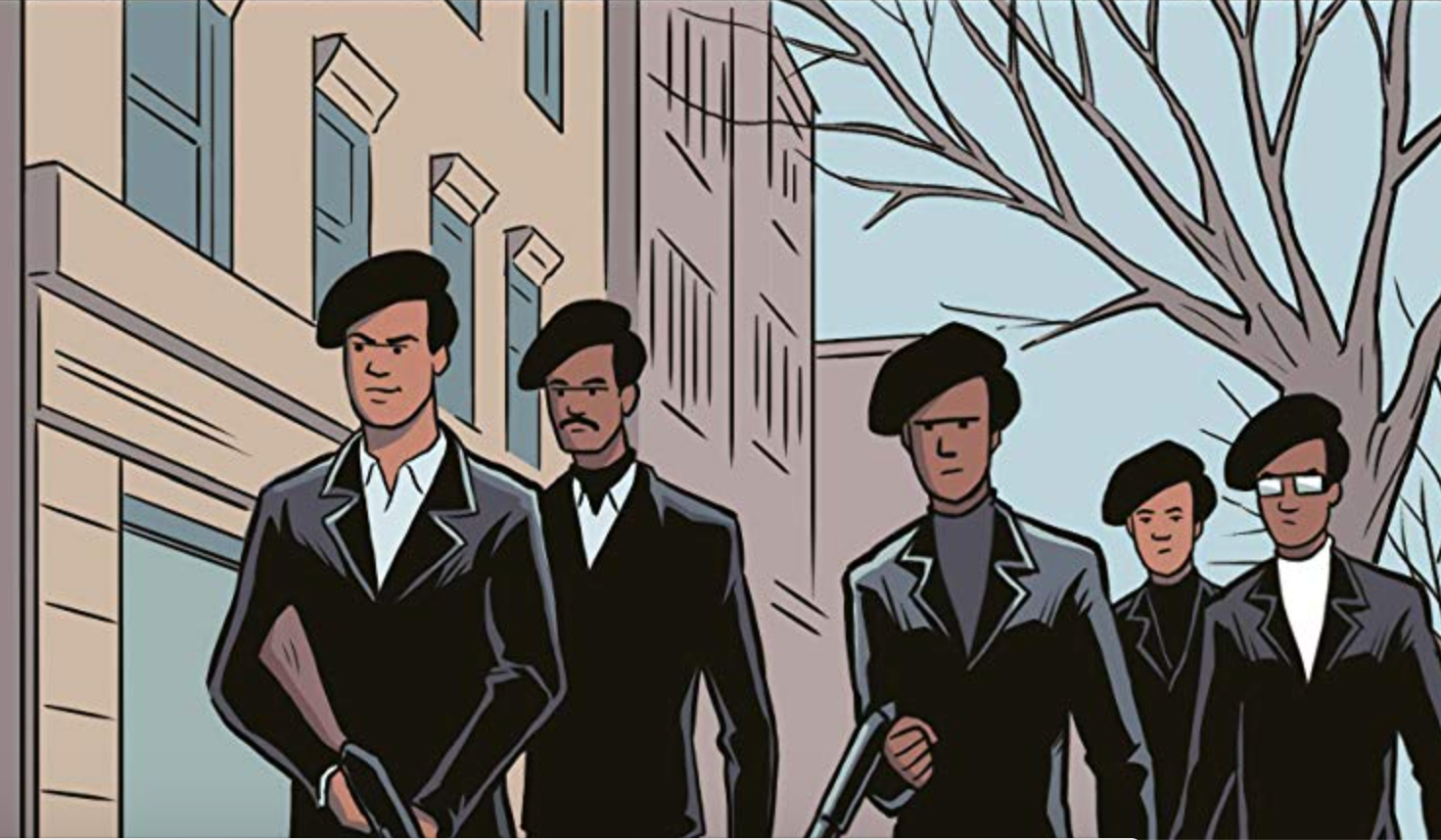Books & Culture
LITERARY ARTIFACTS: Damn the Man, Save St. Mark’s!


Each month in the Literary Artifacts space, writer Kristopher Jansma writes about his encounters with rare books, writerly memorabilia, and other treasures in New York City and around the world, hoping to discover how the internet age is changing the face of literature as we know it.
This week, St. Mark’s Bookshop announced that despite the massive outcry from the reading public, the store’s Cooper Union landlords have not agreed to lower their monthly rent in order to help save the independent bookstore. The news came after weeks of furious blogging, tweeting, and Facebooking on the part of readers throughout New York City. A petition to save the bookshop has gathered 43,825 signatures as of the time of this posting. High-profile activist Michael Moore dedicated much of his October 3rd book-signing to speaking out about how St. Mark’s is actually the price we are being asked to pay for Wall Street’s greed, and in recent weeks, members of Occupy Wall Street have made stops at the store to help rally against the landlords. Bookshop owners, Bob Contant and Terry McCoy, say that it remains to be seen if the recent surge in customer support will be enough to keep the bookshop’s doors open.
Like many other New York City readers, I have followed the saga of St. Mark’s closely, and when the news first broke, I signed the petition, forwarded it to all my friends, watched Michael Moore’s speech on YouTube, and immediately set out to 3rd Avenue and 9th Street to buy a book. Good for me!
Only I must make a confession. It was only the third time I had ever shopped there, after living only blocks away for the past five years… years during which I shopped at chain bookstores like Barnes and Noble, or the now-defunct Borders, hundreds of times.
And yet, when Borders shuttered its stores nationwide, many booklovers actually cheered, and chose to see the bankruptcy as a once-mighty Goliath, felled by persistent indie Davids. Like most people I know, I indifferently paid homage by lining up to silently snag the last few paperbacks at 80% off.
Why would I be outraged at the struggles of St. Marks, where I rarely shopped, and heartless about the closing of the mega-chain? Am I just a pretentious bookstore snob?
Or is there a reason that we care more about the little guy? We booklovers, after all, are so often little guys ourselves. Literature has always loved the Quixotes, the Yossarians, the Piggys… even if these characters tend to meet sad fates. Borders was the unapologetic big guy, with thousands of stores across the country featuring identical high ceilings, red signs, and 3-for-the-price-of-2 deals. But plenty of hard-working, book-loving people worked and shopped there, and the real tragedy is that outside of New York City, Borders was often the only bookstore in town. Now in many places there’s nothing, and this is something to grieve. However there has been scattered news now across the country of independent stores thriving in the absence of Borders, and some former Borders stores reopening as independents. (And here’s a handy guide to finding an independent store within 10 miles of your old Borders.)
Why is this better? Because an indie shop can, like St. Mark’s Bookshop, become a true literary artifact. I’m sure there were plenty of people attached to the Borders in their hometown, or who liked the familiarity of walking into one in another town and finding everything more or less unchanged. But an indie shop can become something unique… a landmark and an attraction to booklovers passing through. Rather than take its shape from a corporate office, it can change shape and style to fit the readers that it serves — something that St. Mark’s knows well, and which has helped it to survive for 34 years — only moving once, and only across the street.
During the legendarily-turbulent 1980’s in the East Village, St. Mark’s thrived while Borders was still a mom-and-pop store in Ann Arbor. They were still making the rent in the mid-90s when Jonathan Larson was down the street, making Rent. When a Barnes and Noble opened across Astor Place, many may have predicted the death of St. Mark’s, but by billing itself as a kind of gourmet alternative, they remained open even after the B&N closed up. When I dropped by, co-owner Terry McCoy was happy to show me a small shelf in the back corner, built out of bits of wood that had survived a fire in 1982 — the date is painted on the side as a stark reminder that St. Mark’s has been through worse.
Writers and artists alike have paced its aisles over the decades, from William S. Burroughs to Tom McCarthy. Bookshops like St. Mark’s remain not only one of the best ways for booklovers to meet authors and hear them talk about their work, but they also can be a place where artists meet one another, whether on a discussion panel, or by sheer chance. In the liner notes to his “music / theater piece” Hydrogen Jukebox, Philip Glass describes how he and Allen Ginsberg concocted their collaboration after a chance encounter at St. Mark’s:
“I happened to run into Allen Ginsberg at St. Mark’s bookshop in New York and asked him if he would perform with me. We were in the poetry section, and he grabbed a book from the shelf and pointed out Wichita Vortex Sutra. The poem, written in 1966 and reflecting the anti-war mood of the times, seemed highly appropriate for the occasion… It was right after the 1988 presidential election, and neither Bush nor Dukakis seemed to talk about anything that was going on. I remember saying to Allen, if these guys aren’t going to talk about the issues then we should.”
Stories like this must abound in the history of a store like St. Mark’s, and everyone who shops and works there knows it is about more than being independent in a world of corporations. When we buy our books there we support both a community and a history of reading. Given the latest news, it seems like the landlords won’t budge on the rent. So what will it actually take to save St. Mark’s?
As The Awl points out, petitions are nice, but they do not pay the rent. If the 43,825 people who have currently signed the petition had also bought a nice new hardcover novel for $25.99, the St. Mark’s Bookshop would have no trouble paying its rent for the next 4 years.
Demonizing the landlords may also not be helping. WNYC reminds us that the Cooper Union is not quite the robber baron of Michael Moore’s rhetoric, but one of the only colleges in the country that offers every single student a full-ride, money they can provide largely as a result of their real estate holdings. According to the statements they made at the hearing, the Cooper Union is nearly bankrupt itself these days.
St. Mark’s Bookshop has always been the anti-establishment establishment — the sort of bookstore that buries its fiction in the back corner behind the racks of literary magazines and puts the intense Social Theory and Cultural Criticism up front under bright lights. Its resistance to the mainstream is, perhaps, part of its charm. And grunge chic is all the rage these days in the East Village. As the nearby Bowery House Hotel has just discovered, people will pay top dollar to pretend to sleep in a flophouse (with Ralph Lauren towels), but all kidding aside, perhaps bookshop owners Terry McCoy and Bob Contant could capitalize a bit on the rich and grungy history that the store has been a part of. I’m not suggesting they sell Out of Print t-shirts by the cash registers — after all, there are three Urban Outfitters within walking distance — but maybe a “William S. Burroughs Spit Here” sign or something might at least remind shoppers what they’re brushing elbows with.

Between 1920 and 1925, The Greenwich Village Bookshop on Christopher Street was a cornerstone of a New York’s blossoming bohemia. It only stayed open for 5 years (today it is a store selling fashionable sunglasses) but owner Frank Shay got every luminary that walked in, from Sherwood Anderson to John Dos Passos, to sign his door, which is now on display at the Harry Ransom Center at the University of Texas in Austin — home to the literary estates of Mailer, DeLillio, Greene, Foster Wallace, and last week, J.M. Coetzee . The door to St. Mark’s may be made of glass, but I bet a few permanent markers would quickly fill it with the signatures of the Theodore Driesers and Upton Sinclairs of today.
The bookshop does have a Facebook page, promoting events and featuring kind words from both authors and fans. I’m almost glad they haven’t discovered Twitter and begun trying to lure customers in with hourly quotes by Horkheimer and Adorno. (“The gods cannot take away fear from human beings, the petrified cries of whom they bear as their names.” #fyeahdialecticofenlightenment). Paris Review editor Lorin Stein recently wrote an impassioned blog post in support of St. Mark’s — which astoundingly sells more copies of The Paris Review each month than they sell on their own website.
But are literary magazines and Michael Moore enough? What will become of St. Mark’s? Perhaps they’ll take up crime-stopping, like East Village Books down the street, or be taken over by a fashion designer and restocked with art and style books. (Zac Posen’s PoseurBooks?) Is it too much to hope that all the employees they’ve had to lay off will drag their drum kits and electric guitars to the roof to stage an all-night benefit concert to save Empire Reco… uhm… I mean St. Mark’s from the clutches of the corporate suits? (Or should they change it to St. Marc’s, “that way it’s kind of that psychedelic, you know, trip thing.” … “Always play with their minds.” Ok, sorry, I’m done with that joke now, really.)
It remains to be seen if St. Mark’s will survive. All of the recent press has brought in a fresh wave of book buyers — perhaps like me, freshly reminded that no great new works of art are being concocted in the aisles of Amazon.com, and that William S. Burroughs never spit in the iBookstore. St. Mark’s and stores like it keep us connected to a literary history and reaching for a literary future. Yes, in our present moment a book can be bought with one-click and delivered instantly to numerous convenient screens. But can we live in the next moment, where this might be our only option?
A book is more than a certain sequence of words. A bookshop is more than a limitless selection of files. There’s a reason we love not just real books but real bookshops, and we live in a moment when the existences of both are threatened. It is not snobbery, or pretention, to indulge in that love. So damn the man, save St. Mark’s.
***
— Kristopher Jansma is a writer and teacher living in Manhattan. His debut novel, The Unchangeable Spots of Leopards will be published by Viking Press in 2013. He has studied The Writing Seminars at Johns Hopkins University and has an MFA in Fiction from Columbia University. He is a full-time Lecturer at Manhattanville College and also teaches at SUNY Purchase. Recently, his short story “A Summer Wedding” won 2nd prize in The Blue Mesa Review’s 2011 Fiction Contest, judged by writer Lori Ostlund. His essays and fiction can also be found on The Millions, ASweetLife.org, The 322 Review, Opium Magazine, The Columbia Spectator, and The (Somewhat) Complete Works of Kristopher Jansma. You can also find him on Facebook.
Photo of the Greenwich Village Bookshop door via the Harry Ransom Center.









